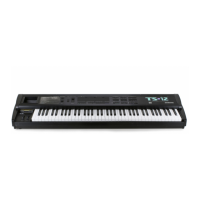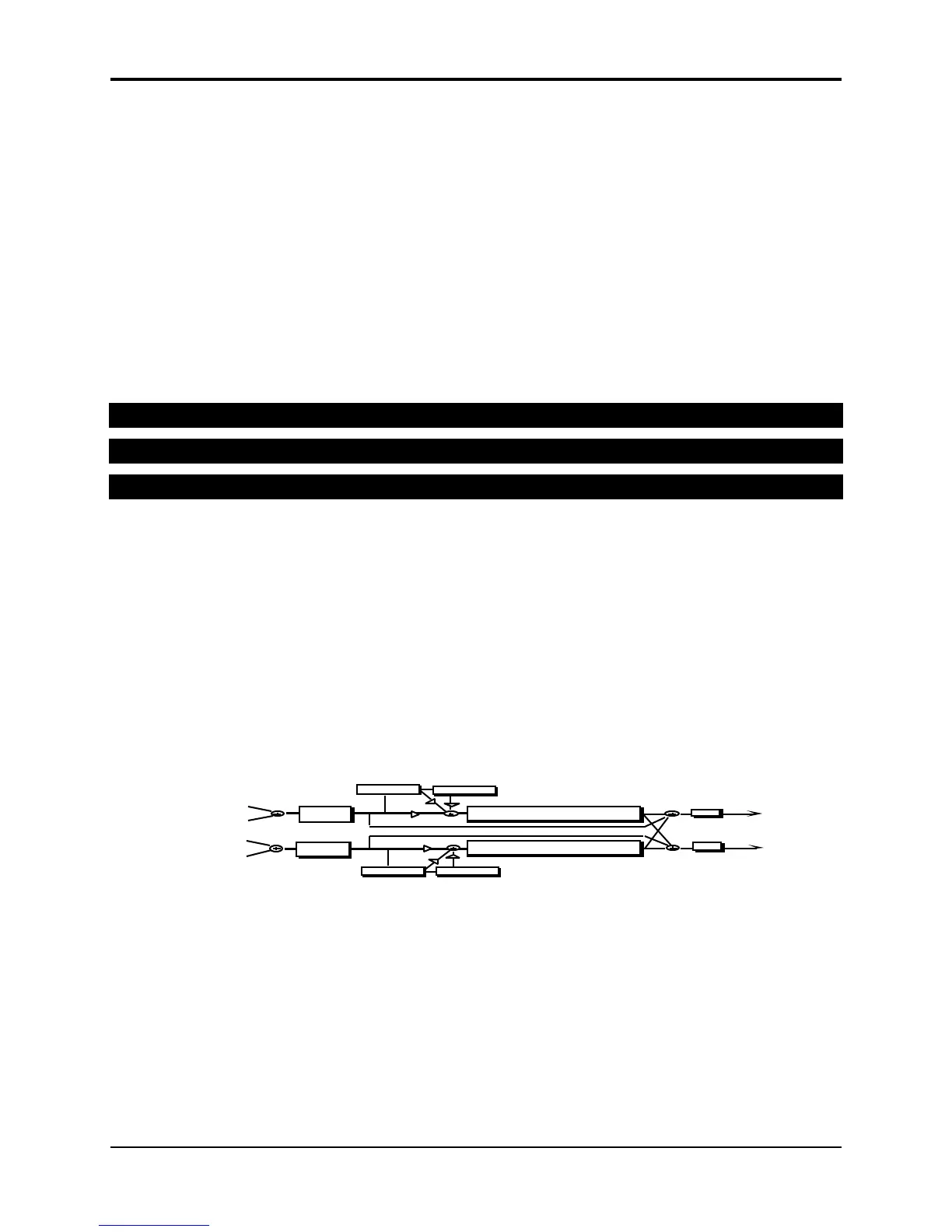TS-12 Musician’s Manual Section 7 — Effect Parameters
5
DEPTH Range: 00 to 99
Controls the depth of the detuning, that is, how much the pitch will change. Low values yield a
metallic sound. Some sounds may require very low values, while others sound more natural
with higher values.
PRIMARY SEND Range: -99 to +99
Controls the level of the diffused input signal into the reverb definition.
POSITION BAL -(1 to 3) Ranges: -99 to +99
The Position Balance parameters simulate the depth of the room. Think of these parameters as
three different microphones placed at various distances within the room (the first is closest to the
front, the third is farthest from the front). When the range (volume) is higher for BAL-1, the
sound appears closer to the front, whereas a higher setting for BAL-3 appears farther from the
front, suggesting a deeper (wetter) room.
35 NONLINEAR REVERB 1
36 NONLINEAR REVERB 2
37 NONLINEAR REVERB 3
Non Linear Reverbs can be used to obtain blooming reverb, gated reverb, reverse reverb and
early reflections. In general, they do not produce an exponentially decaying reverb. Unlike the
hall, room, and plate reverbs, NONLINEAR REVERB 1, 2, and 3 pass the input signal through the
reverb diffusers only once. For this reason the reverb diffusers are called Density, to distinguish
them from the other reverb diffusers (called Definition). Density controls the amount of echo
density, as opposed to the rate of increase of echo density. Other reverbs give limited control of
early reflections. The Non Linear reverbs deliberately impose a coloration on the resulting
sound.
• NONLINEAR REVERB 1 is optimized for shorter duration effects (approx. 0.5 sec.)
• NONLINEAR REVERB 2 offers approx. a 1.5 sec. duration
• NONLINEAR REVERB 3 is sonically similar to NONLINEAR REVERB 1, but there is less
stereo movement, making it better suited for drum tracks
Non Linear Reverb Signal Routing
Echo Time
Echo Time
Diffuser
Diffuser
L
LPF
Main
Outputs
Density
R
LPF
Echo Time
Echo Time
Density
FX-1 Left
FX-2 Left
FX-1 Right
FX-2 Right
The signal goes directly through a diffuser which smears the signal. The signal is then routed to
a decay diffuser (Density), and is diffused over a period of time. Within the density the signal
goes through a high-frequency damper. The signal is then routed to the output. After the
density, the signal passes through a low pass filter. There are two echo times between the
diffuser and the density. There is also an external dry signal (not shown) that goes directly from
the input to the Main Output (DRY). The FX-1 and FX-2 MIX parameters can be routed into the
effect with different Dry/Wet mixes.

